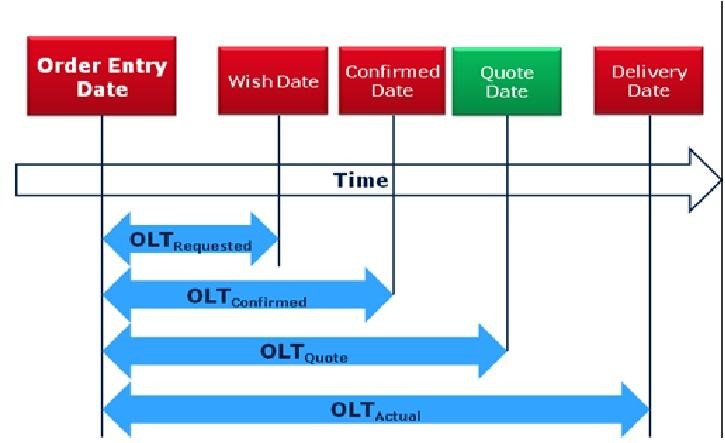
eSellers Guide – what is lead time and how to reduce it
What is lead time? It is the amount of time between when an order is placed and when it is fulfilled.
Some businesses call this processing, while others refer to it as handling. For online merchants, this includes tasks such as storage, stock maintenance, order processing, and shipments.
In a highly competitive market, reducing lead time can give you an advantage over other businesses. That edge can mean the difference between success & failure as an eSeller.
This is especially true for cross-border shipping, where faster lead times are often seen as a major selling point for customers.
Between storage, stock maintenance, order processing, and shipments, online merchants have a big job.
Add to that a tremendously competitive market, and it’s enough to tempt you to close up virtual shop and go home.
But did you know that decreasing lead time is one of the easiest ways to gain an edge over the rest of the industry?
Keep reading this guide for an easy-to-implement set of solutions.
It’s possible to reduce lead time by streamlining your payment process.
Using a platform like Payoneer can greatly reduce the time it takes for you to receive payments from your customers.
By automating your inventory management and fulfillment processes, you can quickly and easily replenish stock as needed, allowing you to keep your lead time to a bare minimum. By implementing these & other strategies, you can keep your customers happy and your business growing at a steady clip.
Keep reading to learn how to improve productivity, decrease shipping lead time, and speed up turnover in general.


What is lead time reduction?
eCommerce merchants are always looking for ways to cut down on the amount of time it takes to get their orders packaged and out the door. Plus competition is fierce with some sellers guaranteeing next day delivery – or even within the hour delivery!
eSellers need to aim for lightning-fast lead times if they want to keep customers happy. This is an even bigger issue for eSellers who are selling their products to customers around the world.
According to UPS, speed of delivery is the fourth most important decision-making factor for online purchasers.
Nearly 40% of shoppers chose marketplaces based on their faster turnaround times. What’s even more interesting, researchers found that consumers were even willing to pay extra for faster shipping.
One of the ways to achieve faster lead times is by using a service like Payoneer, which enables eCommerce merchants to receive payments from customers faster, thus reducing the lead time.
Reducing shipping lead time can give you a serious advantage over your competition, and the good news is it’s not that hard.
Check out these fast tips for cutting down your lead time and staying ahead of the competition.
Tip #1: Turn to FBA dropshipping
Fulfillment by Amazon (FBA) is one of the easiest ways to keep your lead times low.
FBA basically lets this eCommerce giant do all the dirty work for you, from storing to packaging and shipping.
Since Amazon eats, sleeps, and breathes online shopping, they know the industry like the back of their virtual hands, so you have them handle everything for faster, smoother, easier processing.


Using FBA gives eSellers advantages like:
- Faster shipping lead time
- Hassle-free order fulfillment
- More time to focus on marketing or lead generation
- Access to millions of leads through the Amazon Marketplace
- Access to Amazon Prime members, higher quality leads that generally spend twice as much as the average Amazon shopper
- Amazon shipping perks for your customers (like Amazon Prime, 24/7 customer service, generous return policies, etc.)
- Better chances to hit the Buy Box spot
What’s more, it’s a lot easier to build your business if you have the pros at Amazon handling all of your orders.
FBA works best for businesses that are looking to expand their services or reach and eSellers who just don’t want to or can’t handle the hassle of shipping and handling. Follow these steps to get things started:
- Sign up for an Amazon account.
- Have your inventory shipped to Amazon. They’ll store your stock items in their warehouses until sold.
- List your products in the Amazon Marketplace.
- When orders come in, Amazon does the work, and you just pay a fee.
TIP: Seasonal items or slow to sell items may not benefit from FBA since these items can sit in the warehouse for months without movement. In this case, you’d be paying for the space and not reaping any benefits.
Tip #2: Simplify the supply chain
One of the reasons processing takes so long is because eSellers get their products from many sources.
Try consolidating your supply vendors so you can track shipments more efficiently.
If you deal with a lot of specialty items, think about swapping these out for comparable standard items that are easier to stock.
To further streamline your supply chain, consider implementing a just-in-time inventory system.
This approach focuses on receiving goods only as they are needed, reducing the amount of excess inventory that needs to be stored and managed.
As an eSeller, you can try negotiating with your vendors for shorter lead times on their end, so you can receive products sooner and get them out the door to your customers faster.
Tip #3: Be more organized
Sometimes the little hiccups end up costing you loads of time and might even cost you your return customers due to dissatisfaction.
Look at your handling process from start to finish, and see which areas can be tightened up.
For example, are you disorganized about data entry, or just simply lazy and can’t be bothered to do it?
If this step is taking up more time than necessary, invest in a program that automates this annoying task.
Not only will you get out of a boring job, but you’ll reduce the lead time by having tasks get processed faster and automatically.
Cutting down your lead time will give you the edge your internet-based business needs to really soar above the competition.
Find out other great ways to make your e-store shine brighter today.
Tip #4: Use the most efficient & reliable shipping carriers
One of the key ways to reduce lead time is to use a shipping carrier that offers faster delivery options. Many shipping carriers have a variety of shipping options available, such as priority, express, and overnight shipping. By offering these options to your customers, you can meet their demands for faster delivery times and keep them coming back to your business.
Tip #5: Automated inventory management systems
Automating your inventory management can help you keep your lead time to a minimum. With an automated system, you can quickly and easily replenish stock as needed, without having to manually check inventory levels. This can save time and help you avoid stockouts, which can lead to delays in fulfilling orders.
Tip #6: Manage & track inventory with a warehouse management system
Using a warehouse management system (WMS) can help you manage and track your inventory, automate your fulfillment process, and optimize your shipping process. A WMS can help you keep track of inventory levels, automate picking and packing, and even print shipping labels automatically. This can help you reduce lead times by streamlining your fulfillment process and ensuring that orders are shipped out as quickly as possible.
By implementing these strategies and using the Payoneer all-in-one payment solution, you can keep your customers happy and your business thriving.
What is lead time FAQs:
What is lead time in transportation?
- Transportation lead time refers to how long it takes from the moment a product leaves the warehouse until the product arrives at the customer. It doesn’t include the amount of time it takes to manufacture the item, or to locate it in the warehouse.
How is lead time calculated?
- To know how to calculate lead time for shipping, you need to know how many business days it takes to prepare the product for shipping.
For example, imagine someone ordered t-shirts with their name on it for a family reunion. It takes one day for the business to get the t-shirts from the warehouse, 1 day to prepare the design of the family name for the shirts, and 2 days for them to print them and package them ready for shipping. That means the lead time for shipping is 4 days in total.
Is lead time the same as delivery time?
That depends on what lead time we’re referring to, and on what you mean by “delivery time.”
There are a few types of lead time:
- Order lead time – the time it takes from the customer placing the order until the customer receives the product.
- Lead time in shipping and manufacturing lead time – both mean the amount of time from the customer placing the order until the product is ready to ship.
- Delivery lead time – the time it takes from when a product is complete until it’s delivered to the customer.
- Lead time in procurement – refers to how long it takes to get the raw materials or basic items that you need to be able to make the finished product.
- Lead time in inventory management – means the time it takes to prepare an item for shipping, deliver it, order a replacement item, and receive the new item in the inventory.
If “delivery time” means the time it takes to actually deliver the product once it’s ready to be shipped, then that’s the same as delivery lead time. But if it means how long it takes between placing an order and receiving the product, then it’s the same as order lead time.
What are the meanings of shipping time and shipping lead time?
- “Shipping time” means how long it takes for something to be delivered from the warehouse or manufacturing site to the customer.
“Shipping lead time” means how long it takes to prepare something to be ready for shipping.
What is shipping lead time analysis?
- Lead time analysis is the process of investigating the lead time for your business to see how long it takes for your products to be prepared and shipped. It guides you to see how to optimize lead time so that you can offer faster fulfilment rates, leading to greater customer satisfaction.
Does lead time include shipping?
- Some types of lead time include shipping. Order lead time, for example, includes shipping time as well as the time it takes to prepare a product for delivery. But manufacturing lead time does not include shipping; it only includes the time it takes to prepare an item to be ready for delivery.
What is the meaning of lead time in supply chain?
- In supply chain management, lead time means the number of working days between when the customer places an order and the product is ready for delivery.
Register an eSeller account at Payoneer
We know that reducing lead time is crucial for eCommerce merchants looking to stay ahead of the competition.
By streamlining your payment process, automating your inventory management and fulfillment processes, and using efficient and reliable shipping carriers, you can greatly decrease the time it takes to get your orders out the door.
Payoneer’s eSeller account is an excellent solution for simplifying your payment process and reducing your lead time.
Signing up for an eSeller account from Payoneer can help you gain a competitive edge in today’s fast-paced eCommerce landscape.
With Payoneer’s global payment platform, you can receive payments from customers around the world quickly and securely, allowing you to focus on what really matters – growing your business. Don’t wait, sign up for a Payoneer eSeller account today!
Editor’s Note: The original post was updated on 01-28-2023




